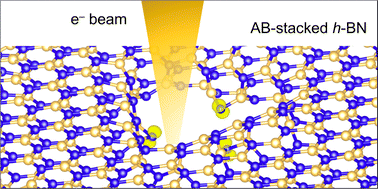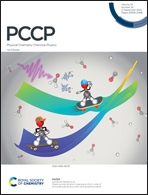Magnetism and interlayer bonding in pores of Bernal-stacked hexagonal boron nitride†
Abstract
When single-layer h-BN is subjected to a high-energy electron beam, triangular pores with nitrogen edges are formed. Because of the broken sp2 bonds, these pores are known to possess magnetic states. We report on the magnetism and electronic structure of triangular pores as a function of their size. Moreover, in the Bernal-stacked h-BN (AB-h-BN), multilayer pores with parallel edges can be created, which is not possible in the commonly fabricated multilayer AA′-h-BN. Given that these pores can be manufactured in a well-controlled fashion using an electron beam, it is important to understand the interactions of pores in neighboring layers. We find that in certain configurations, the edges of the neighboring pores remain open and retain their magnetism, and in others, they form interlayer bonds. We present a comprehensive report on these configurations for small nanopores. We find that at low temperatures, these pores have near degenerate magnetic configurations, and may be utilized in magnetoresistance and spintronics applications. In the process of forming larger multilayer nanopores, interlayer bonds can form, reducing the magnetization. Yet, unbonded parallel multilayer edges remain available at all sizes. Understanding these pores is also helpful in a multitude of applications such as DNA sequencing and quantum emission.

- This article is part of the themed collection: 2022 PCCP HOT Articles


 Please wait while we load your content...
Please wait while we load your content...
